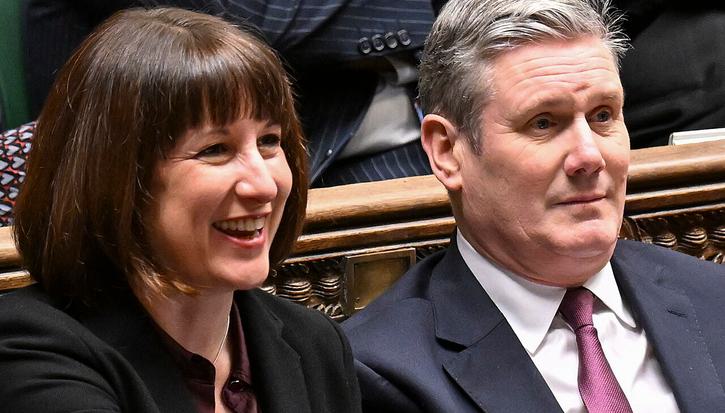The new digital divide
The new digital divideArticle
Information Communication Technologies (ICTs) are undoubtedly a key foundation for unleashing political, civic, social and economic empowerment the world over. We have seen perceptions on ICT investments move from being considered a nice-to-have, to being embedded in key national priorities, particularly in developing countries, where, if well deployed, they could fast-track closing many socio-economic divides.
Yet one common misconception has been that advancing ICTs is just a matter of the technical infrastructure, the build-it-and-they-will-connect approach. The result is that globally, there are digital divides that closely follow ‘traditional patterns’ of inequality. For instance, while half of the world is now online, of the other half who remain unconnected (approximately 3.9 billion people), the majority are women (approximately 2 billion women are unconnected). This digital gender divide has, unfortunately, also been widening, according to the ITU.
As governments and intergovernmental organisations like the UN, the private sector and NGOs concern themselves with how we achieve universal Internet access (a stated goal to be achieved by 2020 in the Sustainable Development Goals; SDG 9c), it is imperative to recognise right from the onset that there are geographical, gendered, socioeconomic and cultural factors that impact who is (un)connected, and factor in emerging recommendations on how to address these, so that new digital divides such as quality of access are mitigated.
Everything from infrastructure design and roll out, to principles like Net Neutrality (the idea that Internet service providers should treat all Internet data as the same regardless of its kind, source, or destination[1]), and human rights, to privacy and security online adversely affect some groups if the above factors are not carefully considered. Looking at advancing Internet access for instance, a popular developmental trope is that surely, some Internet access is better than none. At surface level, this is true. Yet, when investigated further, some interventions risk compounding online inequalities, even as we postulate that Internet and ICTs access, more generally, could help in reducing inequalities everywhere, such as in access to timely, actionable information that improves decision-making, say, for farmers.
The trouble with the aforementioned argument lies in how having access to ‘some Internet’ is defined, and by whom, as often, those who are traditionally marginalised, are hardly ever consulted in the design, development and entrenchment of initiatives. ‘Some Internet’, particularly in many parts of the global South, has been interpreted to mean access primarily, and often solely, through mobile phones. While these are the key devices in the hands of many in these regions, the mobile phone, arguably, is primarily a device designed for consumption, with creation limited to mobile-optimised platforms like those for social media. This, coupled with bite-sized chunks of data and the zero-rating of popular social media platforms (where access to certain sites doesn’t count against your data consumption) also skews the notion of what the Internet is. This is made clear in research showing that many people in developing nations do not at first glance identify as Internet users, even though they report using sites like Facebook.
Applying a gender lens, the risks here are likely to impact women and girls more – as they comprise a majority of the unconnected; connecting them in this way could lead to a sub-par, restrictive Internet experience, especially if conditions for them to ‘graduate’ to accessing the open, unfettered web – such as being able to afford an Internet package subscription- also remain prohibitive.
Another troubling aspect shaping the idea of having access to ‘some Internet’, is the designing of applications like Facebook’s Free Basics. Free Basics zero-rates access to a suite of sites through a single application. Through the Free Basics app, users can access various preloaded sites, some local and others global, and content providers can submit their services to Free Basics (reviewed by Facebook) by following a set of technical specifications. Touted as an ‘on ramp to the Internet’, it is currently operational in 63 countries in Africa, Asia and Latin America, and rolled out in a partnership between Facebook and local telecommunications operators. As an investigation into Free Basics by Global Voices in 6 countries found, the application does not connect users to the global Internet, but collects user data; has little local content, but plenty from US and UK-based corporations. It also violates the Net Neutrality principle- that is- “[it] offers access to a small set of services and prioritizes the Facebook app by actively urging users to sign up for and log into the service. The versions of Free Basics tested also divided third-party services into two tiers, giving greater visibility to one set of information over another.”
The rejection of Free Basics in India, for violating Net Neutrality, as well as the way Angolans co-opted a suite of zero-rated services to create an intraweb through which they could access the content they desired, are indictments to the lack of consultation of these very groups intended to benefit from these ‘altruistic’ initiatives.
Surely the provision of some Internet - whilst better than none - cannot be about compromising core values and rights of access (to an open web), security and privacy (through wanton data collection, often without informed consent), nor about creating new digital divides (quality of Internet access becoming determined by how rich or poor you are, and where in the world you are from).
What are the alternatives? First, we need consensus on the fact that the Internet, and more specifically the open web, is a basic right and a public good. This should guide the investments and interventions made by various actors to connect the unconnected.
Public access solutions- deployed with clear guidelines and upholding the outlined rights and principles above- bear great promise for not only connecting people, but also retaining their rights. As the Alliance for Affordable Internet notes, “In many countries, private Internet access for everyone is an unrealistic target, considering the number of people living in poverty. Indeed, for the poorest, public access may not just be a ‘transition’ solution, but the main means of access for a long time, or at least until income and price come to a balancing point where private access solutions are feasible for the majority.” This approach could be a boon for connecting women and girls worldwide, as the prohibitive costs of data and devices have been found to be a key barrier to getting and remaining online.
Public access facilities can also be leveraged to offer educational programmes like digital skills training, which in turn can promote local content development, and can stimulate greater demand for online services - in effect, addressing several other hurdles that keep people, particularly women offline, such as lack of skills and knowhow and scarcity of relevant content
The desire to connect the unconnected is understandable, for all with a stake in Internet consumption for business, service provision and more. Furthermore, everyone has a right to be connected to this global resource. It will be a costly affair, no doubt. However, achieving universal Internet access shouldn’t be at the expense of quality access, and access to the open web, the primary means by which we connect to the Internet. It should not deny people agency to explore the Internet in its entirety, to create and contribute to its diversity. Nor should it be limited to ‘data farms’, harvested at the pleasure of companies or governments.
All this calls for pause. The big risk is that if we continue down this problematic path, we could end up with a ‘splinternet’; one’s ability to experience the Internet’s full benefits becoming a function of how rich or poor they are, yet again compounding the inequalities faced particularly by women and girls who, across the board, are also faced with income inequality . Furthermore, it could lead to the Internet being perceived as a fundamentally unsafe space for marginalised and left-behind groups or communities, especially if the introductory and sole avenues for their connecting are inherently restrictive and extractive.
Nanjira Sambuli is a researcher, policy analyst and advocacy strategist interested in and working on understanding the unfolding impacts of ICT adoption and how those impact governance, innovation, entrepreneurship and societal culture, with a keen focus on gender implications.
She is currently the Digital Equality Advocacy Manager at the Web Foundation, where she leads advocacy efforts to promote digital equality in access to and use of the Web, with a particular focus on the Foundation's Women’s Rights Online (http://webfoundation.org/wro-network/) initiative.
[1] https://www.merriam-webster.com/dictionary/net%20neutrality
Related items

Regional economies: The role of industrial strategy as a pathway to greener growth
Regions like the North should have a key role to play in the development of a green industrial strategy.
Achieving the 2030 child poverty target: The distance left to travel
On 27 March, the Scottish government will announce whether Scotland’s 2023 child poverty target – no more than 18 per cent of children in poverty – was achieved.
Spring statement: A changed world calls for a changed course
If there are decades where nothing happens and there are weeks where decades happen, the last few weeks feel seismic. The prime minister was right to say the world has changed. Donald Trump’s re-election in November has unleashed a wave…